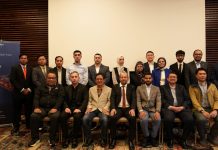N A Ansari, CEO of Jindal Shadeed Iron and Steel exudes confidence that Oman’s manufacturing industry would pick up in 2016, despite the downturn in global economy
The year 2016 is predicted to be a tougher year with the continued decline in oil prices. What is your outlook for 2016?
Of course the year 2016 is going to be much more challenging in view of the downturn in global economy. As per IMF, the world economic growth in 2015 is estimated to be 3.1 per cent. IMF forecast that there would be stronger growth in 2016 – 3.6 per cent for global GDP – with long term growth of 4.0 per cent.
Oil-exporting countries within the GCC which are traditionally oil dependent are aiming to diversify their economies. Many projects have been announced recently in the GCC often with the objective to reduce import dependency and hence demand for steel from downstream industries is expected to be increased. Though global steel market is not encouraging, in Oman, growth in steel demand (driven by construction activity) is encouraging. This will see remarkable growth in the Industrial Sector.
How was Jindal Shadeed’s performance in the year 2015?
Jindal Shadeed Iron and Steel (JSIS)’s performance has been continually on the increasing trend both in terms of quality and quantity. JSIS has now switched over from a supplier of Hot Briquetted Iron (HBI) to a supplier of steel products – square and round billets/ blooms after the commissioning of Steel Melt Shop in April 2014. It is catering to various suppliers as per their special needs. Our operations are certified as per ISO 9001; ISO 14001 and OHSAS 18001 – 2007.
Can you share a few highlights of the year 2015 for the company?
As mentioned, JSIS is an Integrated Management System (IMS) Certified company with ISO 9001; ISO 14001 and OHSAS 18001 – 2007.
In addition, in 2012-13 our DRI Plant name plate capacity exceeded 1.5 MTPA. DRI operation continues to be cited by Midrex in various international forums as the best operating plant worldwide. JSIS has been awarded, along with two more plants out of 72 Midrex Units worldwide, in the Midrex Seminar held in Barcelona, Spain on October 18, 2015, for achieving five million tonnes of production within four years of operation [2011 – 2014]. We achieved an exceptional annual operational availability of 98.51 per cent for the year 2014. And we have successfully completed 14 days DR Process training to the operation team of seven engineers from Voestalpine, Texas Plant.
Our Steel Melt Shop reached the highest ever production in a day – 6,440 tonnes on November 30 in 2015; highest ever number of heats in a day – 31 on November 30 in 2015; highest ever production in a month- 125,494 tonnes in November 2015; and the highest ever inspection in a month – 101,201 tonnes in November 2015.
What were the main challenges? And what were the factors that helped the company do well?
Present steel market scenario is not conducive for the health of steel industry. One of the reasons is the dumping of cheaper steel from China, Russia, Ukraine etc. The present steel market worldwide is facing challenges in marketing its steel products. This is because of unfair means of continual imports of Square Billets from countries like China, Iran, CIS etc. at much lower prices which are less than actual cost of production. Such cheap imports are also coming in to UAE and other GCC countries.
The financial health of domestic steel industry is deteriorating because of surge in imports of steel at a price lower than the domestic cost of production, thereby creating a threat to the jobs and survival of steel industry.
In addition, presently JSIS is facing challenges in the availability of gas at affordable prices.
When it comes to the factors helping to overcome these challenges, the pricing situation is very dynamic. Appropriate decision making while marketing our products is vital and we succeeded in making right decisions. Other factors include identification of ideal product mix, production of more value-added items, increase in customer base by identifying specific needs, supplying quality products and timeliness and cost control measures that are being undertaken up to reduce the cost of production.
How is Oman’s manufacturing industry going to shape up in 2016?
The manufacturing industry in Oman would pick up and somewhat help reduce the deficit in view of the growing construction, manufacturing and infrastructure developmental activities. One of the reasons is the Government support for the SME sector: In line with the vision of His Majesty, development of SMEs is one of the means for the development of Oman.
In addition, the steel sector has a huge potential in providing the needed impetus to the growth of SME sector in some of the following downstream value added units. There is enough demand for steel in this region, because steel demand in the Middle-East is marked by the rise in economic conditions in the region. The reconstruction projects are expected to raise demand of steel in Saudi Arabia, Qatar, Kuwait, UAE and Lebanon. Saudi Arabia is the fastest growing steel market in the Middle-East followed by UAE. Middle East steel industry has third fastest growth rate worldwide following China and India, and vigorous demand growth would support capacity enhancement in the industry.
Oman has investment potential as there are infrastructure development plans like railways, roads, real estate, port etc. A country like Oman which is now embarking on a new era of infrastructure and industrial development would support the growth potential of industry.
The Sultanate’s efforts to encourage nonoil sector industries would definitely contribute to the national economy and become an alternative to otherwise oil dependent economy. Above all, steel Industry is the frontrunner in the development and growth of the economy.
WEATHERING THE STORM
To report this post you need to login first.






